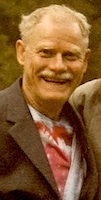
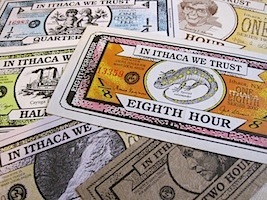


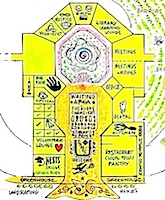


 |
 |
 |
 |
 |
  |
| PAUL
GLOVER ESSAYS: community
control of food, fuel, housing, health care,
planning, education, finance. |
| HOME | INTRO | CURRENCY | SUCCESSES | HOW-TO BOOK | PUBLICITY | ESSAYS |
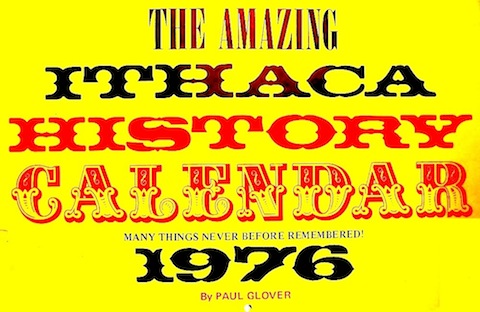 I created a large calendar of
local history (17"x 22") for the bicentennial year. Every day
of the year shows at least one event that happened on that day, and
most days are illustrated. Small samples of each
month are shown below.
A FIVE-MINUTE HISTORY
OF ITHACA, NEW YORK by Paul Glover
The sea and land took turns occupying this place for hundreds of milllions of years. Then glaciers crawled through town carrying ice a half mile deep. As the last glacier left, just 6,000 years ago, mastodons and humans entered the valley. Eventually the mastodons died off while the people prospered in tribal groups. Five hundred years ago Hiawatha brought five tribes together as the Iroquois Nation. They lived in harmony for three hundred years until George Washington ordered them destroyed. White settlers arrived right after the Revolutionary War. They moved into these forests and shared their cabins with mud, mosquitos, and rattlesnakes. Soon a road was made here from the east and this place became named Ithaca. |
Within
twenty years, by 1820, there were a thousand people. Most of the
present business district streets were alredy being used.
Ithaca was
still pretty isolated. About ten years later steamboat and railroad traffic made the village open for rapid growth. The population doubled and quadrubbled. Merchants replaced farmers as leaders of the community. Many varied industries used the land and labor of Ithaca, and filled the sky with their smoke. Fortunes were made by some, misfortune was the life of many. When major railroad routes bypassed Ithaca, factories generally followed them. The University opened in 1868 and gradually came to dominate the character of the economy and the pace of development. Because of its influence new inventions, such as electric lights and telephones, were pioneered in the village. Twenty years later Ithaca became a city. The streets were paved. Then sewers were laid. Electric trolley cars and bicycles carried most city traffic. The "Gay Nineties" were apparently actually rather stable and gay. Around the turn of the century rapid settlement of the hillsides prompted enlargement of city boundaries. Automobiles started to take over the road. The number of local newspapers declined from nine to three as radio became popular. From 1913 to 1920 Ithaca was the "movie capitol of the world," chosen as the site for filming by the Warton Studio because of its natural beauty. Trees were then so large and dense that Ithaca was aptly called "Forest City." The Depression of the Thirties had slight impact here, and some recall easier times then than now. With expansion of state roadways, especially after World War II, mobility and commerce and mass communications (TV arrived 1947) brough Ithaca fully apace with the latest fashions and frills of the modern American lifestyle. City boundaries stretched into new suburbs, as many residents left the downtown area for higher ground. Single family residences on the Flats are frequently sold to realtors and slumlords who turn them into student apartments. The population becomes ever more transient and business relies heavily on students and tourists. Although nearly all of the city is developed for commercial or residential use, the Master Plan calls for even more intensive multiple-housing and industrial land use. New roads, including an elevated four-lane highway, will thrust Ithaca into the Twenty-first Century, and a way of life it has never known before. |
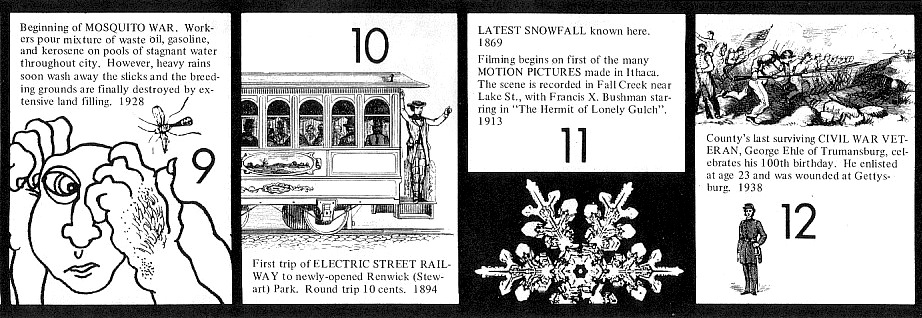 |
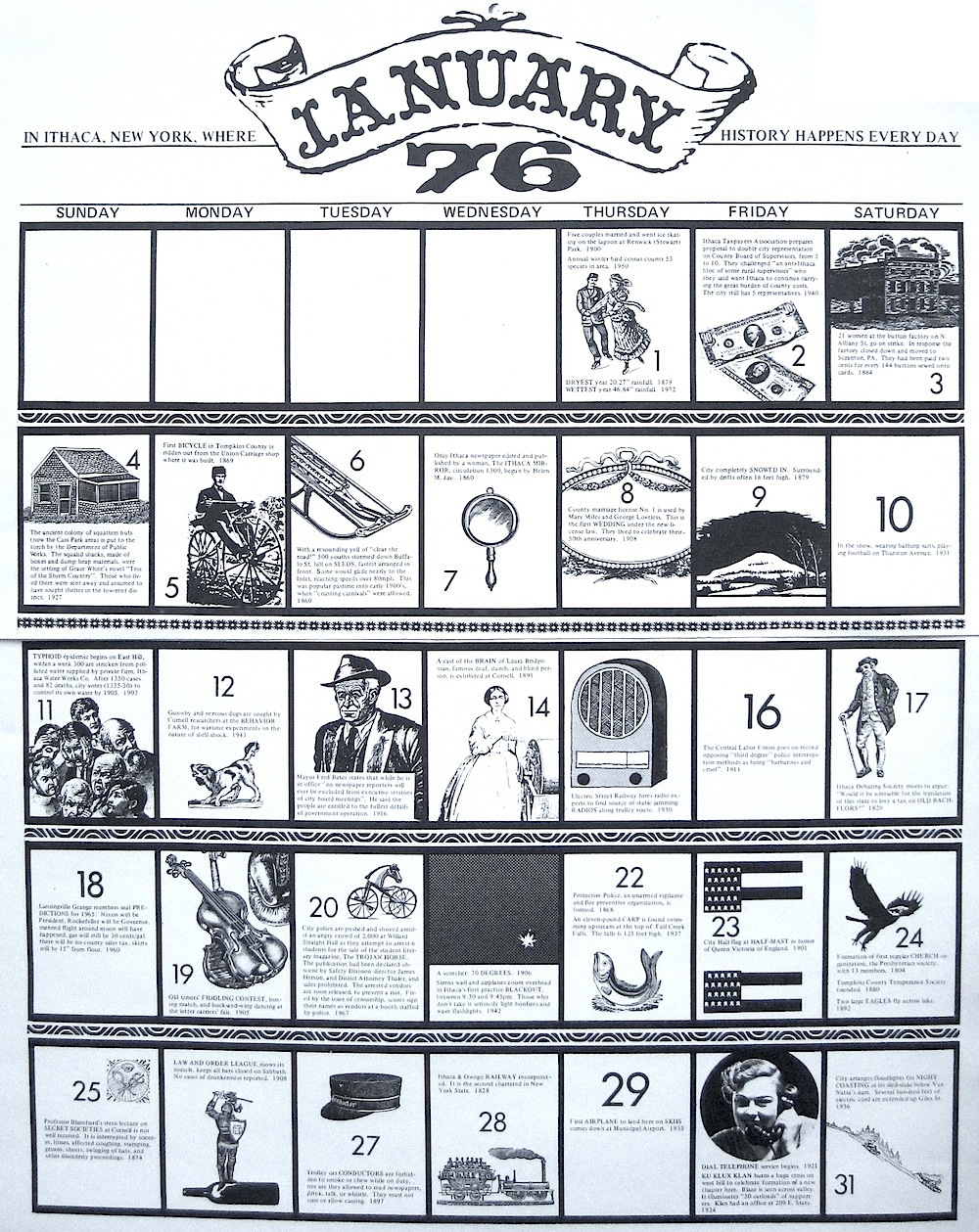 |
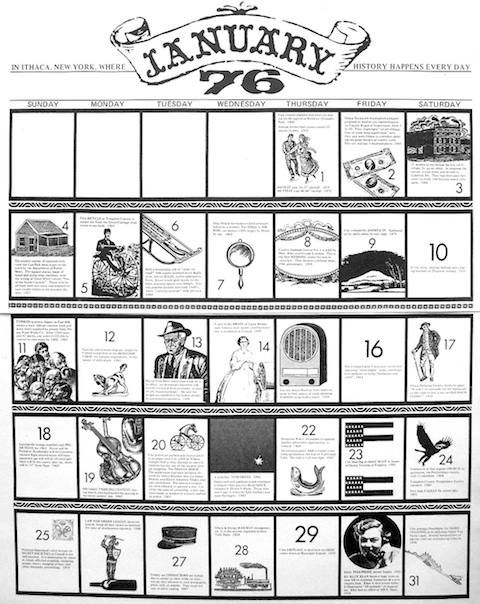 |
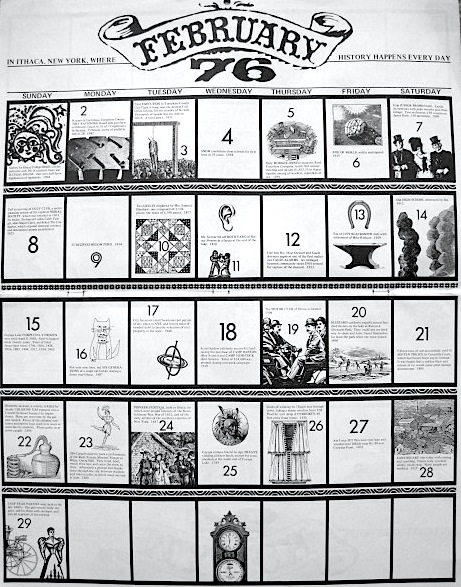 |
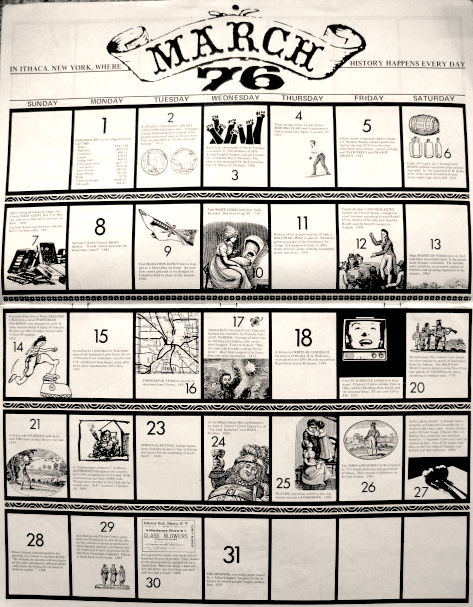 |
|
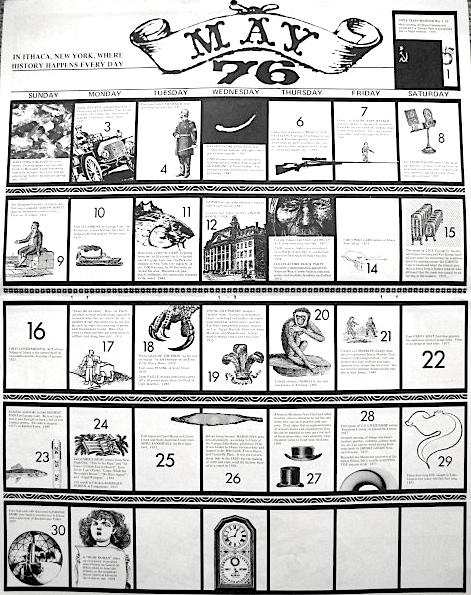 |
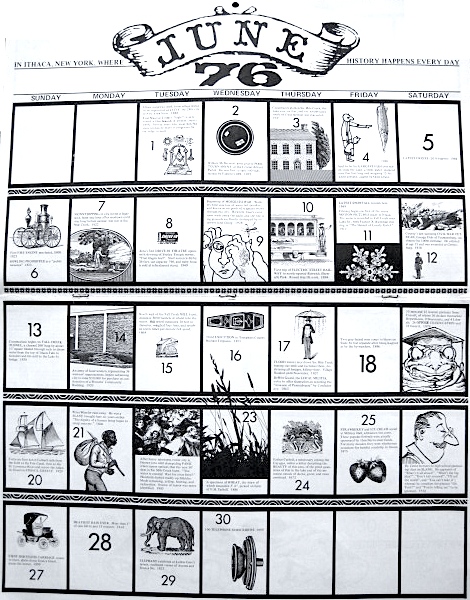 |
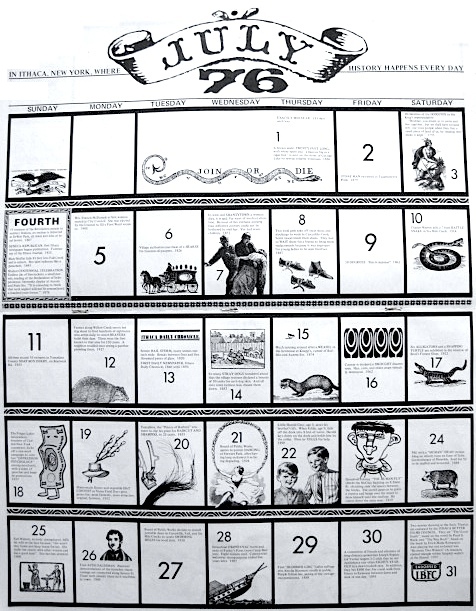 |
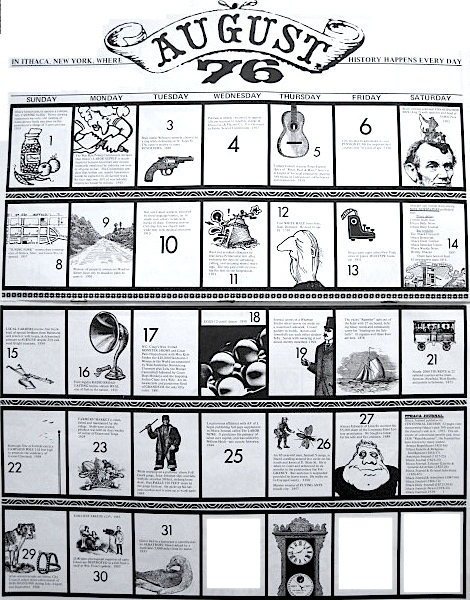 |
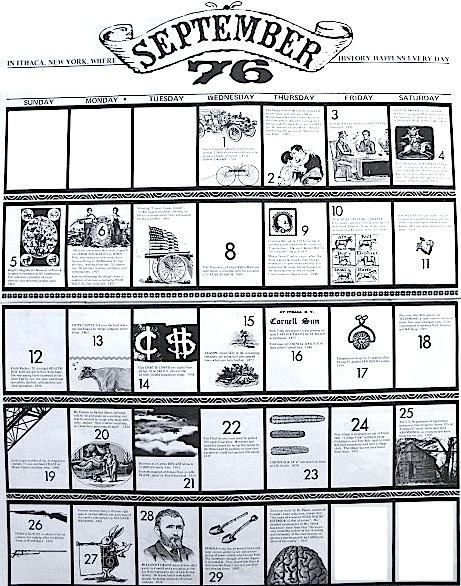 |
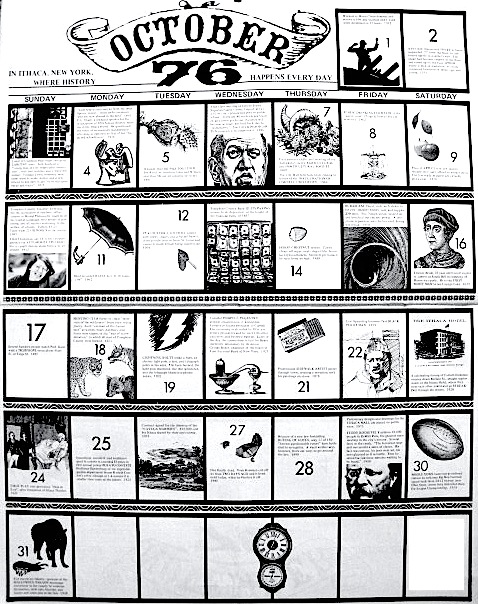 |
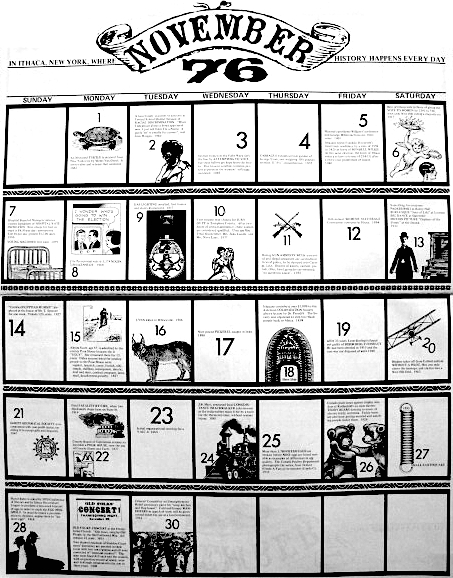 |
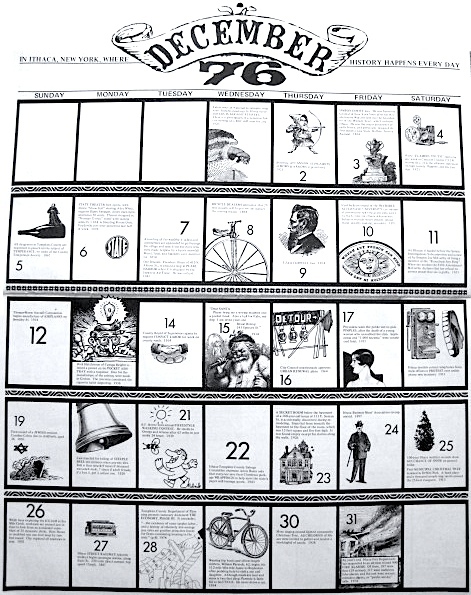 |
| HOME | INTRO | CURRENCY | SUCCESSES | HOW-TO BOOK | PUBLICITY | ESSAYS |